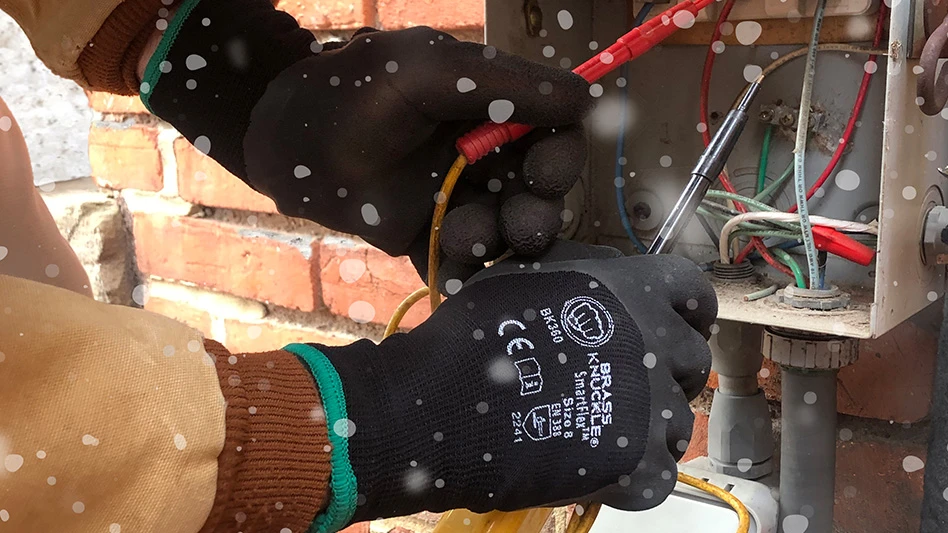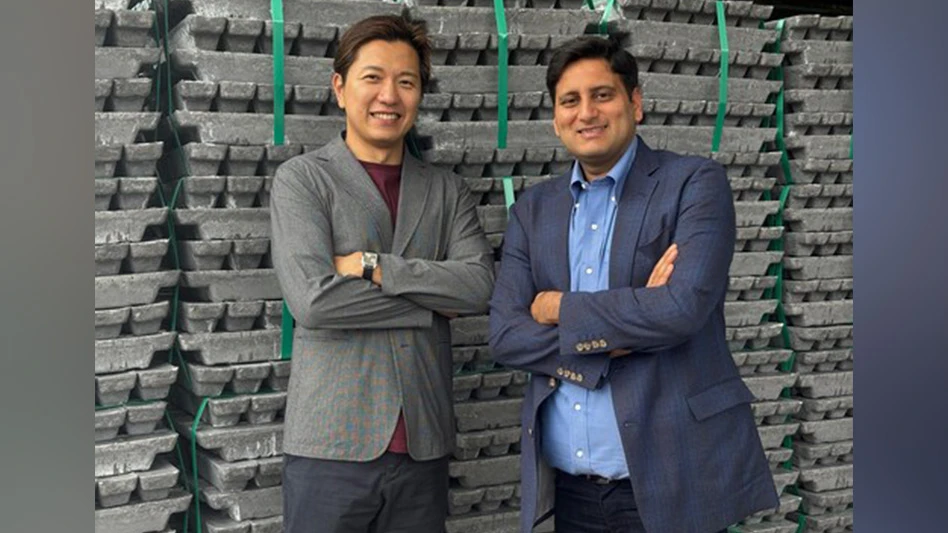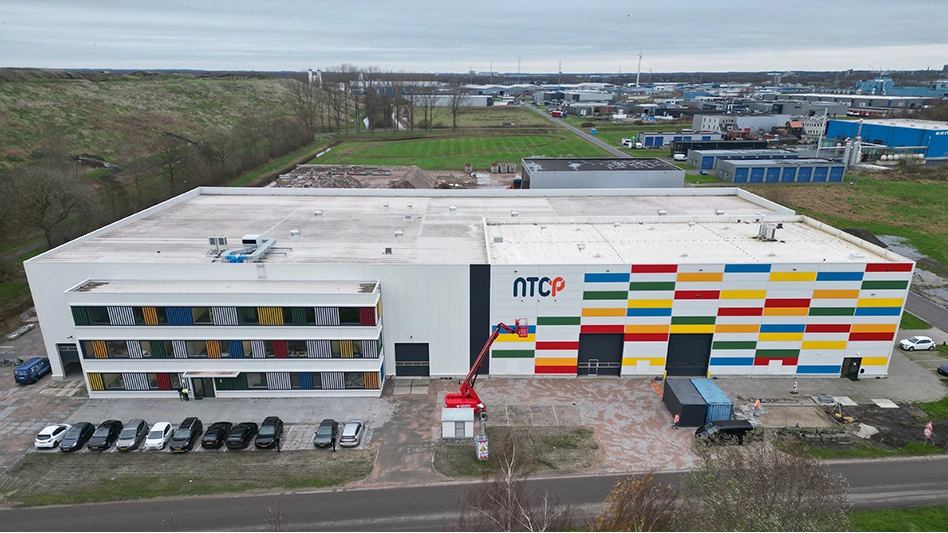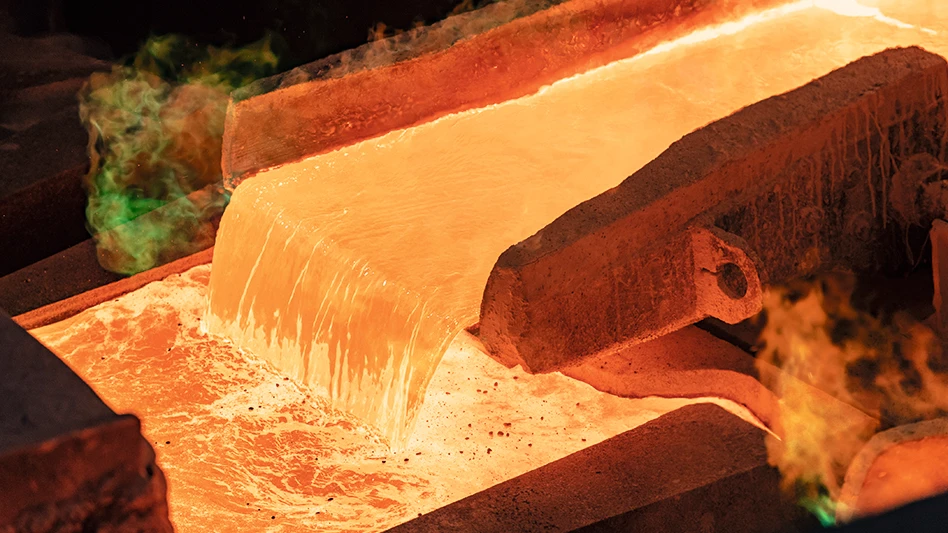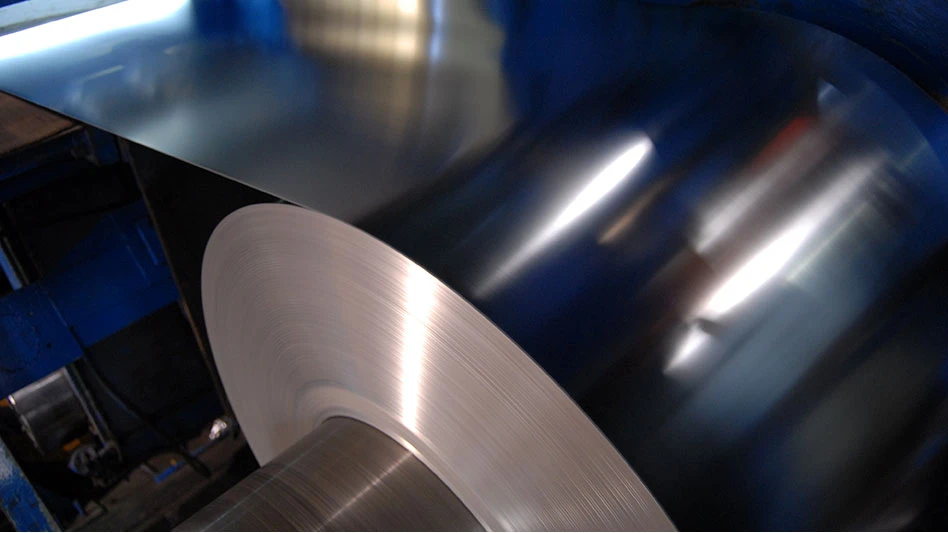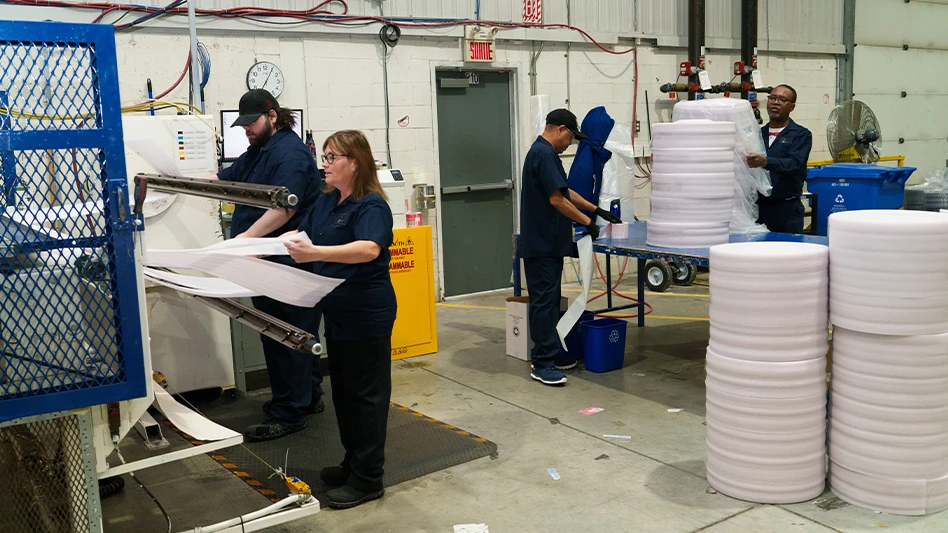
Photo courtesy of BlueScope North Star
BlueScope has reported net profit after tax (NPAT) of $179.1 million for the first half of its 2025 fiscal year, a $260.2 million decrease compared with the comparable period in its 2024 fiscal year. The decline in NPAT was despite higher earnings before interest and taxes (EBIT) of $131.2 million in its Australian operations and of $69.1 million in its Asian operations, which were 10 percent and 8 percent higher, respectively than the comparable period a year earlier.
The company’s North American business, which includes its North Star electric arc furnace steel mill in Delta, Ohio, delivered underlying EBIT of $182.3 million, 65 percent lower than in the second half of the previous fiscal year, while its New Zealand and Pacific Islands business reported EBIT of $3.1 million, 83 percent lower than a year ago.
“Underlying EBIT for the half was $308.8 million, a profitable result despite the depressed spread environment in which it was delivered, which highlights the need for business model resilience,” says Managing Director and CEO Mark Vassella in the news release accompanying the company's earnings report.
"While an 8.1 percent return on invested capital is not at the level we would like to see, it is a solid result in this climate of soft steel spreads in Asia and the US and soft demand conditions for our operations outside the U.S.,” he continues. “Importantly, this shows the business is in a much stronger place than a decade ago, and with the actions being taken to bolster near-term performance, the company is well-positioned to benefit from a recovery in these key external earnings drivers.”
Strategy and growth to 2030
Since its development in 2019, the company says its “Transform, Grow, Deliver” strategy, supported by its financial framework, has guided how it creates value and is expected to achieve significant earnings growth over the next five years.
With expected delivery in its 2026 fiscal year, BlueScope says it has started $200 million of targeted cost and productivity initiatives and continues to review opportunities to extend this through operational and overhead efficiencies, manufacturing productivity and better use of raw materials.
In the medium term, the company says it is working to realize $500 million of targeted annual incremental earnings from growth initiatives such as the North Star debottlenecking, the ramp-up of its Coated Products business in the U.S. and value-added products sales growth in Australia.
Furthermore, an improvement to spread levels from their current cyclical lows would offer meaningful upside, according to the company, even allowing for potentially unfavorable foreign exchange rate impacts.
BlueScope says its U.S. cold rolling and metal coating investment is being deferred to focus on accelerating its branded product offering using external metal-coated steel supply. Working capital is being optimized with an expected $200 million to $300 million benefit in the next 18 months.
"BlueScope continues to progress a range of initiatives and investments to both secure and grow its sustainable earnings,” Vasella says. “This includes the investments made to secure steelmaking in Australia and New Zealand through the No.6 Blast Furnace reline and upgrade and electric arc furnace projects and to grow our best-in-class steelmaking in the U.S. Importantly, it also includes the ongoing focus to shift towards our higher-margin value-added products, such as Colorbond steel, which saw volume increase to historically high levels in 1H FY2025 in Australia. Additionally, these iconic brands underpin our extensive operating footprint in Asia and provide an exciting growth opportunity in the US. It is thanks to these initiatives, and others, that we can deliver a profitable result today and growth for tomorrow.
"Operating cash flow for the half was a $21 million outflow, lower than 1H FY2024 due to softer earnings and higher capital expenditure as we invest to secure long-term sustainable earnings and growth,” Vasella says. “Despite the lower operating cash flow, BlueScope again finished the year with a robust balance sheet, with $88 million net cash.”
First half results
In North America, North Star delivered a significantly softer result in the first half of its 2025 fiscal year compared with the prior half, predominantly on materially weaker benchmark spreads, the company says. Realized spreads were supported by the longer lag pricing component of the sales mix, and improved conversion cost performance and higher volumes further supported the result.
In the company’s earnings call, Vasella said, “We want to share with you some more context on the cost drivers that we've seen in North America over the last five years. Over this time, the U.S. steel industry has seen industry production costs increase on macroeconomic and inflationary pressures, primarily in non-benchmark raw materials, including alloys, additives and fluxes, actual versus benchmark obsolete scrap pricing and in begun freight on raw materials.”
Buildings and Coated Products North America also delivered a significantly softer result than in the previous half, mainly because of continued margin normalization in the engineered buildings and West Coast businesses. BlueScope says the segment also was affected by a softer contribution from BlueScope Properties Group, which completed two smaller projects in the half. BlueScope Coated Products performance deteriorated, delivering a loss in the first half of its 2025 fiscal year, driven by lower asset use on softer volumes. The turnaround program has been refocused on immediate improvement, the company says.
In the earnings call, Vasella said, “North America is a clear driver of growth, but I note that all regions have material contribution to our growth ambitions. And what's most exciting to me is that these initiatives and investments are underway and are all within our core business and capability set.”
Regarding the Section 232 tariffs on steel imports into the U.S., Vasella said, “BlueScope is well-positioned for the slated U.S. tariffs, with our 3-plus million tons per year at North Star meeting all the requirements as melted and poured in the U.S., and as such, the beneficiary of the potential steel price support these tariffs will provide.
“I do note that we export roughly 200,000 to 300,000 tons per annum to North America, predominantly from Australia, as feed for our Steelscape business on the West Coast, where we transformed the product into value-added material,” he continued.
“Now it's unclear as to the broader impact of any potential tariffs on these exports, as we expect the Steelscape margins will be supported by higher selling prices, and we continue to seek an understanding of whether the exemption Australia received from the Section 232 tariffs will be extended.”
Southeast Asia delivered a similar result to the second half of fiscal 2024 on broadly unchanged volumes across the region, with Thailand continuing to lead performance, though earnings improved in Vietnam and Indonesia.
Performance in China was stronger in the recently completed period than in the prior half on typical seasonality, though softer than the first half of 2024 based on persistent weakness in the broader Chinese economy, BlueScope says.
India delivered a breakeven performance in the half as it continues to integrate growing volumes of coated and painted product sourced under a supply agreement with Tata.
In New Zealand and the Pacific Islands, BlueScope says the soft macroeconomic conditions and low levels of construction activity continued from the prior half, with realized spreads affected by weaker export pricing and higher raw material costs. This was offset in part by lower conversion costs on delivery of initiatives under the cost and productivity program.
In Australia, where the company is headquartered, BlueScope says it realized stronger spread performance as lower coal and iron ore costs more than offset softer pricing. Benchmark spreads remained at depressed levels throughout the period, and domestic despatches increased during the half on improving activity, predominantly in residential construction segments.
Sustainability update
BlueScope says it continued to make progress against its key sustainability outcomes in the first half of its 2025 fiscal year, which included the launch of the global Refocus on Safety program and the advancement of its climate strategy, exemplified by progress on the collaboration with Rio Tinto and BHPon Australia's first ironmaking electric smelting furnace pilot plant and the implementation of emission-reducing technologies across its facilities, such as the electric arc furnace (EAF) project in Glenbrook, New Zealand.
The company says it continued to strengthen its supply chain oversight, having assessed 167 suppliers in during the half through its responsible sourcing program.
2H FY2025 outlook
BlueScope says it expects underlying EBIT in the second half of its 2025 fiscal year to range from $360 million to $430 million, reflecting an improvement on from the first half driven by an improved spread outlook in the US.,. stronger domestic volumes in Australia and benefits from the groupwide cost and productivity program.
Latest from Recycling Today
- Nucor names new president
- DOE rare earths funding is open to recyclers
- Design for Recycling Resolution introduced
- PetStar PET recycling plant expands
- Iron Bull addresses scrap handling needs with custom hoppers
- REgroup, CP Group to build advanced MRF in Nova Scotia
- Oregon county expands options for hard-to-recycling items
- Flexible plastic packaging initiative launches in Canada
